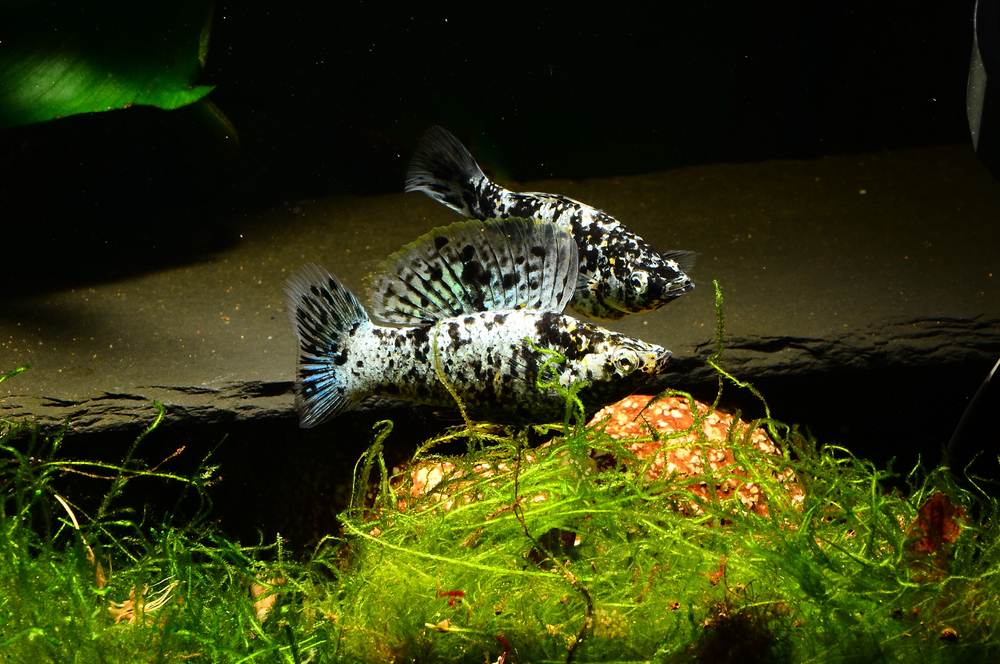Dive into the colorful and energetic world of molly fish, the sparkling gems of home aquariums!
Whether you’re a seasoned aquarist or new to the fish-keeping hobby, understanding the lifespan and care needs of these vibrant creatures is key to a thriving aquatic environment.
Molly fish, known for their lively behavior and stunning variety of colors, often leave enthusiasts wondering just how long they can enjoy the company of these delightful swimmers.
Typically, molly fish grace our tanks for 3 to 5 years, but with the right care, their lifespan can extend up to an impressive 10 years. From ensuring pristine water quality to providing a balanced diet, there are several ways to maximize the health and happiness of your molly fish.
Ready to learn the secrets to keeping your molly fish vibrant and vivacious for years to come? Let’s dive in!
Contents
Key Takeaways on How Long Do Molly Fish Live?
- The lifespan of molly fish can vary depending on their environment and care.
- Proper care, including maintaining water quality and providing a nutritious diet, can help extend the lifespan of molly fish.
- Understanding the factors that can affect the lifespan of molly fish is essential for ensuring their health and well-being.
Don’t miss out on these other top picks in this category:
Understanding Molly Fish
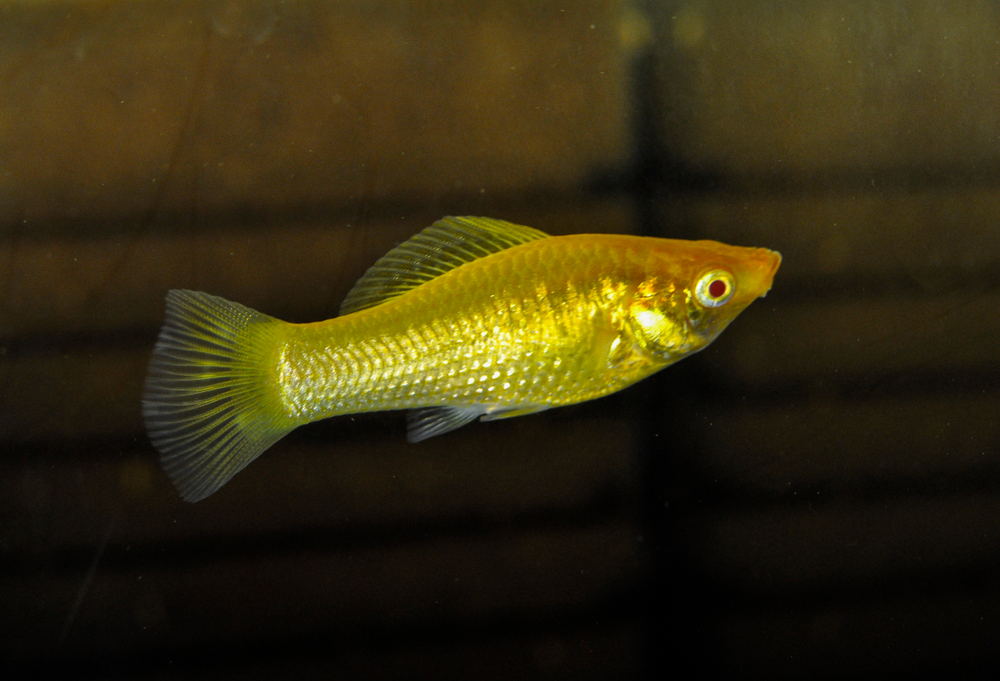
Molly fish, scientifically known as Poecilia sphenops, are a species of freshwater fish that are native to Central and South America. They are a popular choice for aquariums due to their hardy nature and striking appearance.
Molly fish come in various types, including sailfin mollies, balloon mollies, and lyretail mollies. Each type has unique physical characteristics and behavior patterns.
Wild molly fish usually live for around 3 years, but those kept in aquariums can live up to 5 years or more with proper care. Factors such as water quality, diet, and genetics can affect their lifespan.
Molly fish are known for their genetic diversity, which is why they come in a variety of colors and patterns. Their genetic makeup also makes them resistant to certain diseases and parasites.
It is important to note that molly fish are social creatures and should be kept in groups of at least 3-4 individuals. They also require a tank with a minimum size of 10 gallons and a pH level between 7.0-8.5.
Molly Fish Lifespan
Molly fish are a popular choice for aquarium enthusiasts due to their vibrant colors and peaceful nature. One of the important factors that people consider before getting a molly fish is their lifespan.
The lifespan of a molly fish depends on various factors such as genetics, environment, and quality of care.
In captivity, molly fish can live for an average of 3-5 years. However, with proper care and a stress-free environment, they can live up to 5-7 years. Factors such as water quality, diet, and tank size play a crucial role in determining the lifespan of a molly fish.
Molly fish are hardy and adaptable to different water conditions. However, they require a stress-free environment to thrive. Stressful conditions such as overcrowding, poor water quality, and aggressive tank mates can significantly reduce their lifespan.
One of the ways to ensure a stress-free environment for your molly fish is to provide them with a spacious tank. A minimum of 10 gallons of water per fish is recommended.
Additionally, maintaining good water quality by regularly changing the water and monitoring the pH levels is crucial.
Habitat of Molly Fish
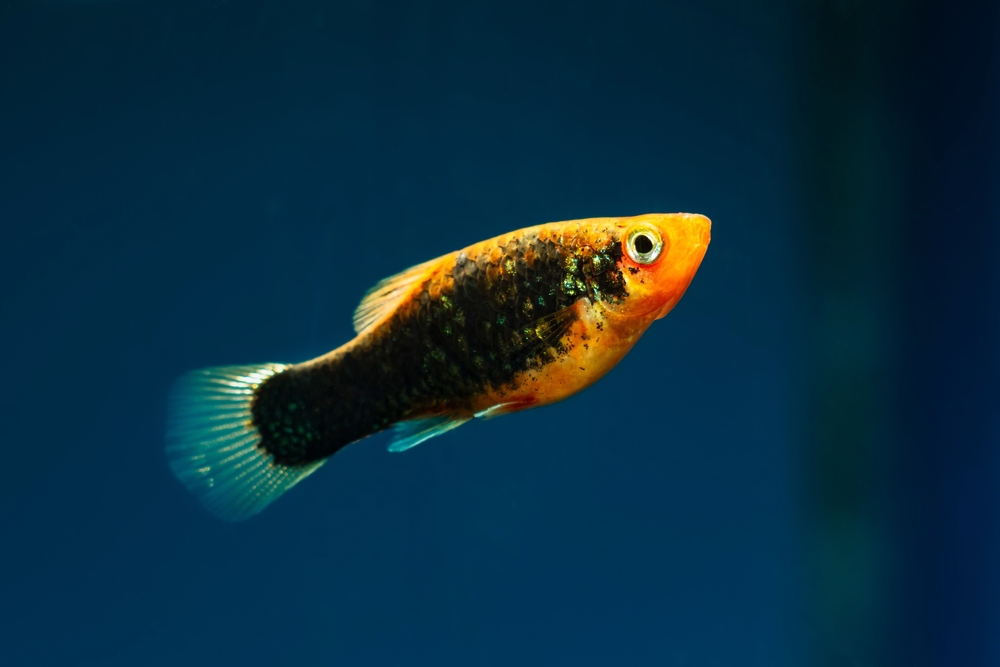
Molly fish are freshwater fish that are native to Mexico and Central America. They are commonly found in rivers, streams, and lakes, but they can also survive in brackish water. Molly fish are hardy and adaptable, which makes them popular among fish enthusiasts.
In the wild, molly fish prefer to live in warm, shallow waters with plenty of vegetation. They are known to inhabit slow-moving streams and rivers, as well as stagnant ponds and lakes. Molly fish are also found in brackish water near the coast, where freshwater meets saltwater.
In captivity, molly fish require a tank with plenty of space to swim and hide. They prefer a temperature range of 75-82°F and a pH range of 7.0-8.5. Molly fish are also sensitive to water quality, so it is important to maintain a clean and well-filtered tank.
Caring for Molly Fish
Molly fish are relatively easy to care for, making them a great choice for beginner aquarists. However, proper care is still necessary to ensure their longevity and well-being. Here are some important factors to consider when caring for molly fish:
1. Tank Conditions
Molly fish need a spacious tank with plenty of room to swim. A tank that is too small can cause stress and lead to health problems. The recommended tank size for a small group of molly fish is at least 20 gallons.
2. Water Changes
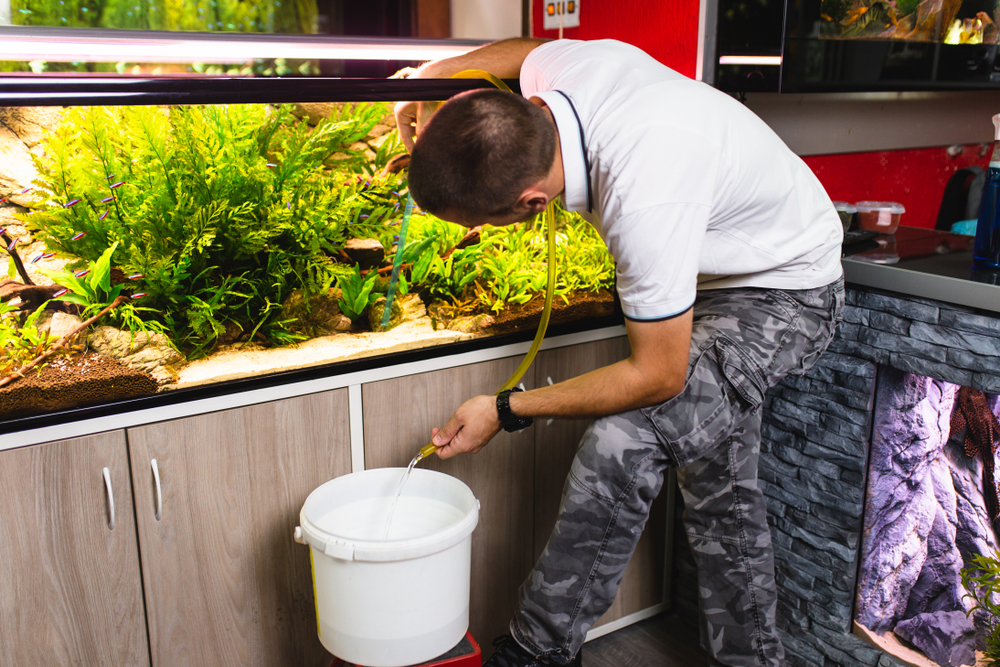
Regular water changes are essential for maintaining good water quality and preventing the buildup of harmful toxins. A 25% water change should be done every two weeks, or more frequently if the tank is heavily stocked.
3. Water Parameters
Molly fish prefer slightly alkaline water with a pH between 7.5 and 8.5. They also require moderately hard water with a hardness level between 10 and 25 dGH. It’s important to test the water regularly and adjust as necessary.
4. Tank Setup
Molly fish are active swimmers and need plenty of open swimming space. They also appreciate having places to hide and explore, such as plants and decorations. A sandy substrate is recommended, as molly fish like to dig and sift through the substrate.
5. Feeding
Molly fish are omnivores and will eat a variety of foods, including flakes, pellets, and live or frozen foods. It’s important not to overfeed, as this can lead to health problems and poor water quality.
6. Stress
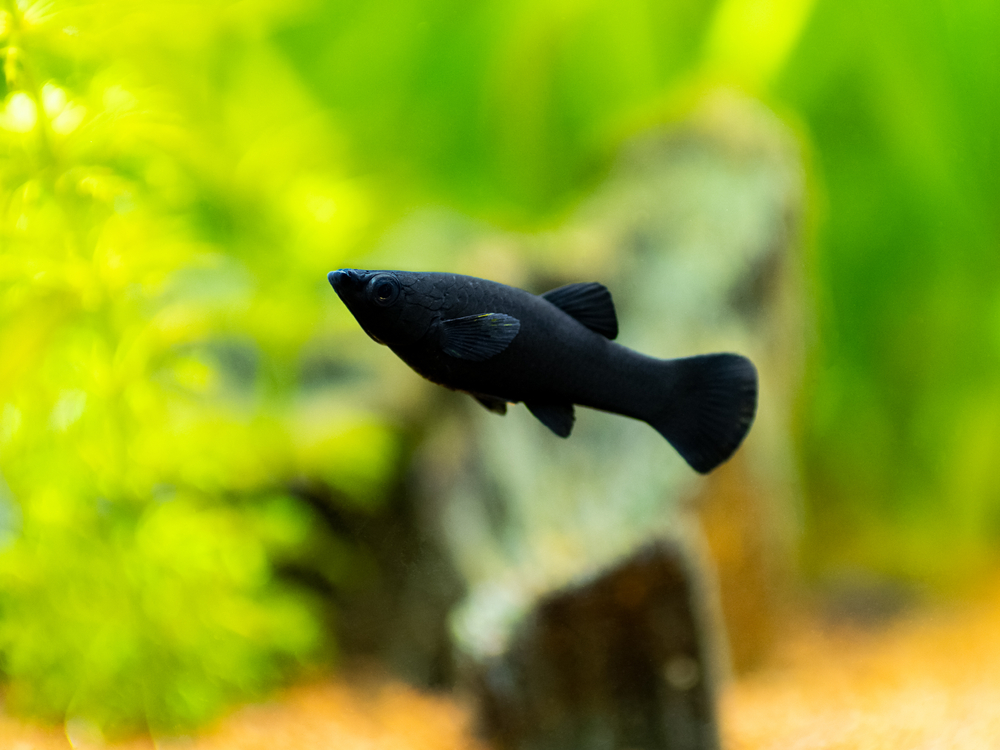
Molly fish can be sensitive to changes in their environment, so it’s important to minimize stress as much as possible. This includes avoiding sudden changes in water temperature or chemistry, as well as providing plenty of hiding places and a peaceful tank environment.
7. Crowded Tank
Overcrowding can lead to stress and health problems for molly fish. It’s important to keep the tank properly stocked and avoid adding too many fish at once. A good rule of thumb is to have no more than one inch of fish per gallon of water.
Dietary Needs
Molly fish are omnivorous and require a varied diet to maintain optimal health. In the wild, they feed on a range of food sources, including insects, plant matter, and small crustaceans. In captivity, they can be fed a combination of flakes, pellets, and live or frozen foods.
When selecting food for molly fish, it is important to choose high-quality products that are specifically formulated for their dietary needs. Flakes and pellets that are designed for omnivores are a good choice, as they contain a balanced mix of protein and plant matter.
In addition to commercial food products, molly fish can also be fed a range of live or frozen foods, including brine shrimp, worms, and insects. These foods can be a great source of protein and can help keep your fish healthy and active.
Molly fish also benefit from a diet that includes plant matter. Vegetables such as spinach, lettuce, and peas can be added to their diet to provide essential nutrients and fiber.
It is important to note that while molly fish do require plant matter in their diet, they should not be fed exclusively on vegetables.
Breeding Molly Fish
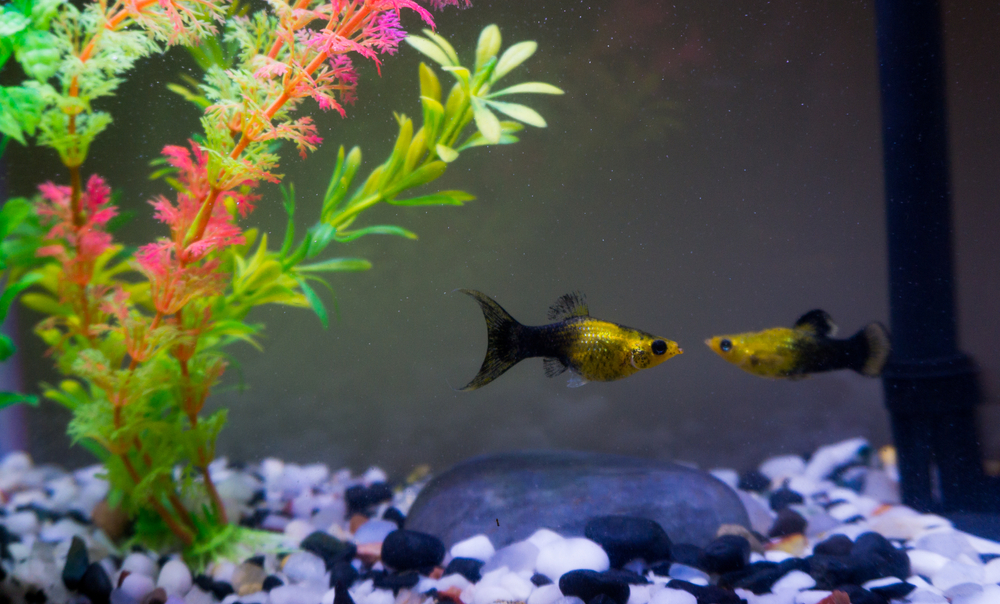
Molly fish are livebearers, which means they give birth to live fry instead of laying eggs. Breeding molly fish can be a fun and rewarding experience for fish keepers. However, it is important to understand the basics of breeding and care for the fry.
Molly fish are known for their high reproductive rates, and a single female can produce up to 100 fry in one pregnancy. Breeders should ensure that the adult molly fish are healthy and well-fed before breeding. Inbreeding should be avoided to prevent genetic defects in the fry.
The breeding process usually involves introducing a male and female molly fish to a breeding tank. The breeding tank should be well-maintained with a temperature of around 78-82°F and a pH level of 7.0-8.5. The female molly fish will then give birth to live fry in the tank.
Once the fry are born, they should be separated from the adult fish to prevent them from being eaten. The fry should be fed a diet of small, frequent meals of specialized fry food.
It is important to monitor the water quality of the breeding tank and perform regular water changes to ensure the health of the fry.
Common Diseases and Prevention
Molly fish are generally hardy and resistant to diseases, but they can still fall ill if their environment is not properly maintained. Here are some common diseases that molly fish may develop and how to prevent them.
1. Ich
Ich is a common parasite that affects many types of fish, including molly fish. It appears as white spots on the fish’s body and fins.
To prevent ich, it is important to maintain good water quality and avoid overcrowding the tank. If your molly fish does get ich, there are several treatments available, including medicated fish food and aquarium salt.
2. Ammonia Poisoning
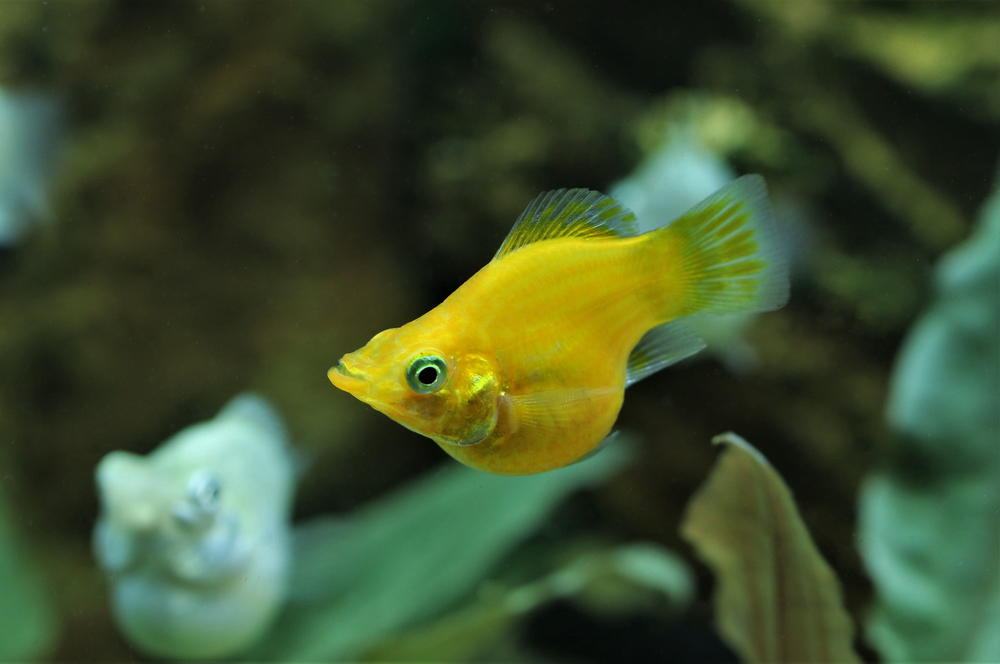
Ammonia poisoning is a serious condition that can be fatal to molly fish. It occurs when there is too much ammonia in the water. To prevent ammonia poisoning, it is important to cycle the tank properly and perform regular water changes.
If your molly fish is showing signs of ammonia poisoning, such as gasping for air at the surface of the water or lethargy, it is important to take action immediately. This may include performing a water change and adding an ammonia detoxifier to the water.
3. Parasites
Molly fish can also be affected by a variety of parasites, including flukes and worms. These parasites can cause a range of symptoms, including lethargy, loss of appetite, and abnormal swimming behavior.
To prevent parasites, it is important to maintain good water quality and avoid introducing infected fish into the tank. If your molly fish does get parasites, there are several treatments available, including medicated fish food and aquarium salt.
4. Fin Rot
Fin rot is a bacterial infection that affects the fins and tail of molly fish. It appears as ragged edges or fraying of the fins.
To prevent fin rot, it is important to maintain good water quality and avoid overcrowding the tank. If your molly fish does get fin rot, there are several treatments available, including antibiotics and medicated fish food.
Behavior and Compatibility
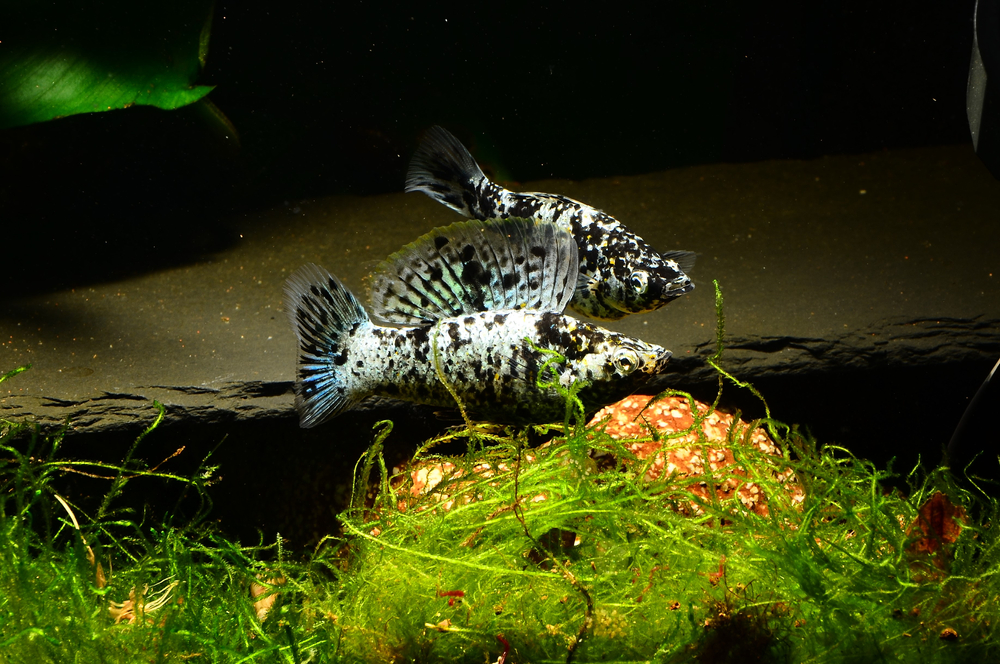
Molly fish are known for their peaceful temperament, making them a great addition to community tanks. They are social creatures and thrive in groups, so it’s recommended to keep at least four or five together.
When it comes to tank mates, molly fish are generally compatible with other peaceful fish. However, they may become aggressive towards smaller fish or those with long fins, so it’s important to choose tank mates carefully. Avoid keeping them with aggressive tank mates as well.
Male molly fish are known to be more aggressive than females, especially during breeding season. It’s recommended to keep one male with multiple females to avoid aggression.
Molly fish are shoaling fish, which means they prefer to swim in groups. Keeping them in a group will not only make them feel more comfortable, but it will also bring out their natural behavior.
Types of Molly Fish
Molly fish are a popular choice for aquarium enthusiasts due to their hardiness, adaptability, and variety of color and patterns. There are several types of molly fish, each with its unique characteristics.
1. Black Molly

The black molly is a popular type of molly fish due to its striking appearance. As the name suggests, these fish are entirely black, and they can grow up to 4 inches in length.
Black mollies are peaceful and can thrive in a community aquarium. They prefer slightly brackish water and a diet that includes both plant matter and protein-rich foods.
2. Dalmatian Molly
The dalmatian molly is another popular type of molly fish, known for its white body with black spots that resemble the coat of a dalmatian dog.
These fish are hardy and can adapt to a wide range of water conditions. They prefer a diet that includes both plant matter and protein-rich foods, and they can grow up to 4 inches in length.
3. Balloon Belly Molly
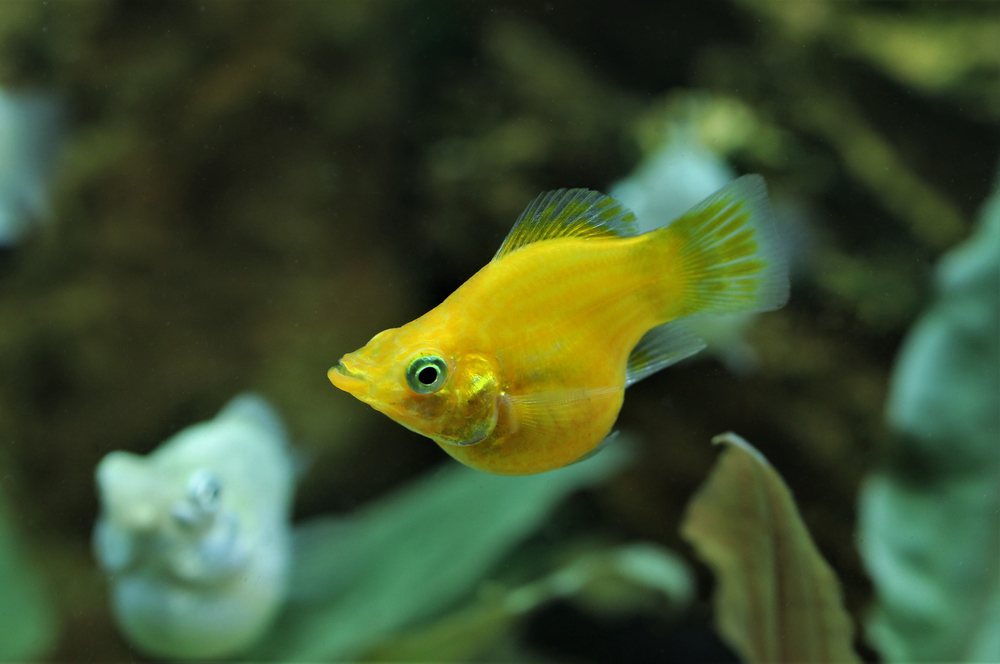
The balloon belly molly is a unique type of molly fish that has a rounded, balloon-like belly. These fish are peaceful and can thrive in a community aquarium.
They prefer slightly brackish water and a diet that includes both plant matter and protein-rich foods. Balloon belly mollies can grow up to 3 inches in length.
4. Sailfin Molly
The sailfin molly is a type of molly fish known for its large dorsal fin, which resembles a sail. These fish are hardy and can adapt to a wide range of water conditions.
They prefer a diet that includes both plant matter and protein-rich foods, and they can grow up to 5 inches in length.
5. Gold Dust Molly
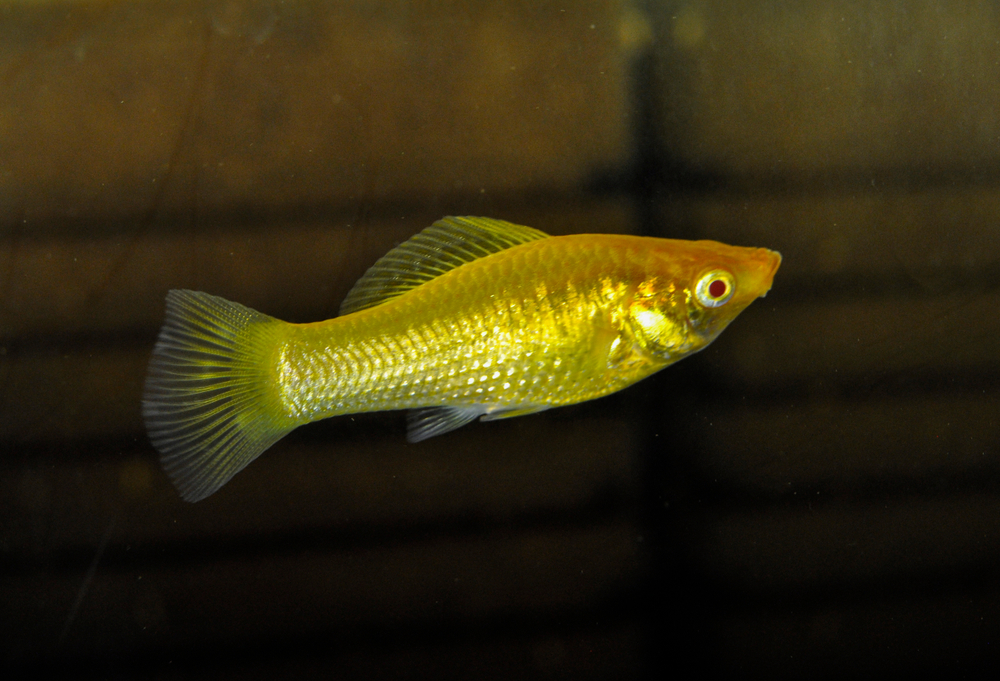
The gold dust molly is a type of molly fish with a unique color pattern that resembles gold dust. These fish are peaceful and can thrive in a community aquarium.
They prefer slightly brackish water and a diet that includes both plant matter and protein-rich foods. Gold dust mollies can grow up to 4 inches in length.
6. Platy and Guppy
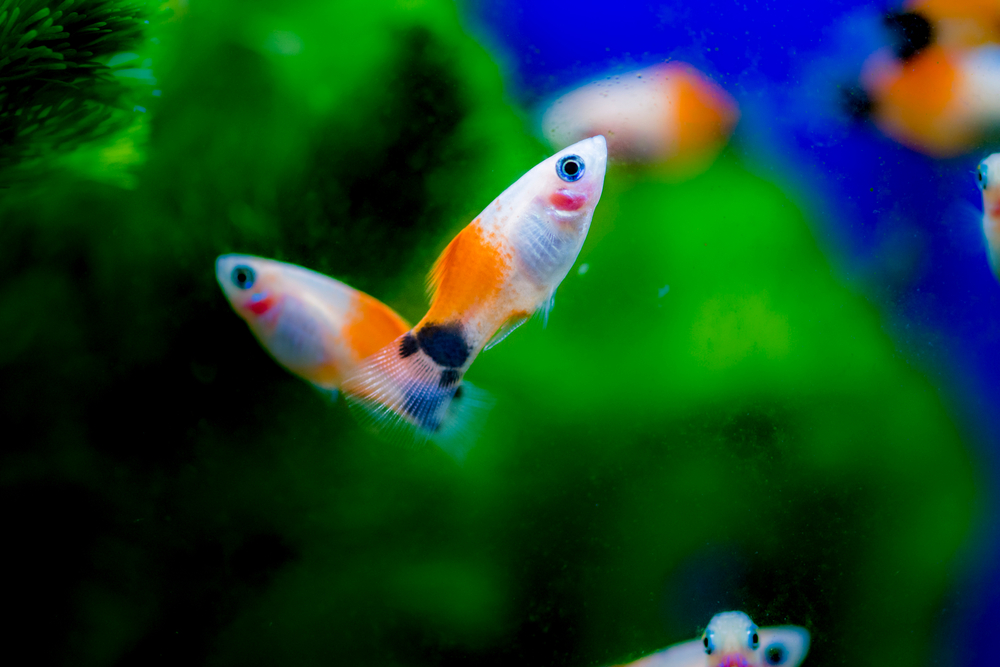
Platies and guppies are not technically molly fish, but they are closely related and often kept together in community aquariums.
Platies are known for their bright colors and peaceful nature, while guppies are known for their vibrant coloration and active swimming behavior. Both species prefer a diet that includes both plant matter and protein-rich foods and can adapt to a wide range of water conditions.
Purchasing Molly Fish
When it comes to purchasing Molly fish, there are several things to consider. Pet stores are a common place to find these fish, but it’s important to choose a reputable store that sells healthy fish.
It’s also important to consider the choices available when purchasing Molly fish. There are several different types of Molly fish, each with its own unique characteristics and requirements. Some of the most common types include:
- Black Molly
- Silver Molly
- Dalmatian Molly
- Balloon Molly
When choosing a type of Molly fish, it’s important to consider factors such as size, color, and temperament. It’s also important to consider the specific needs of the fish, such as water temperature and pH levels.
Molly fish are hardy fish that can adapt to a variety of conditions, but it’s still important to provide them with a healthy environment. This includes a properly sized tank, appropriate water conditions, and a balanced diet.
Frequently Asked Questions
What is the lifespan of molly fish?
Molly fish have a relatively short lifespan compared to other fish. The lifespan of molly fish can vary depending on several factors, such as the environment they live in and their genetic makeup. On average, molly fish can live for 3 to 5 years.
What is the average lifespan of molly fish in captivity?
Molly fish can live longer in captivity than in the wild, as they are protected from predators and have access to a consistent food source. In captivity, molly fish can live for 5 to 7 years on average.
How long can molly fish survive in a tank?
Molly fish can survive for several years in a well-maintained tank. However, the lifespan of molly fish in a tank can be affected by several factors, such as water quality, temperature, and diet.
It is important to provide a suitable environment for your molly fish to ensure their longevity.
What factors can affect the lifespan of molly fish?
Several factors can affect the lifespan of molly fish, including water quality, temperature, diet, genetics, and stress. It is essential to maintain a clean and healthy environment for your molly fish and provide them with a balanced diet to ensure their longevity.
What is the maximum lifespan of molly fish?
The maximum lifespan of molly fish is around 5 to 7 years, although some molly fish have been known to live for up to 10 years in exceptional cases.
How can I ensure my molly fish live a long and healthy life?
To ensure your molly fish live a long and healthy life, you must provide them with a suitable environment, a balanced diet, and regular maintenance.
Keep the water clean and maintain the appropriate temperature and pH level. Additionally, avoid overfeeding your molly fish and provide them with plenty of hiding places to reduce stress.

Ian Sterling, founder of Fishlab.com, began his aquarium journey over 30 years ago, driven by a deep fascination for fish and their diverse personalities. His website, Fishlab.com, is dedicated to making fishkeeping accessible and enjoyable, offering beginner-friendly guidance, expert insights, and a community for aquarists to connect and share experiences.


